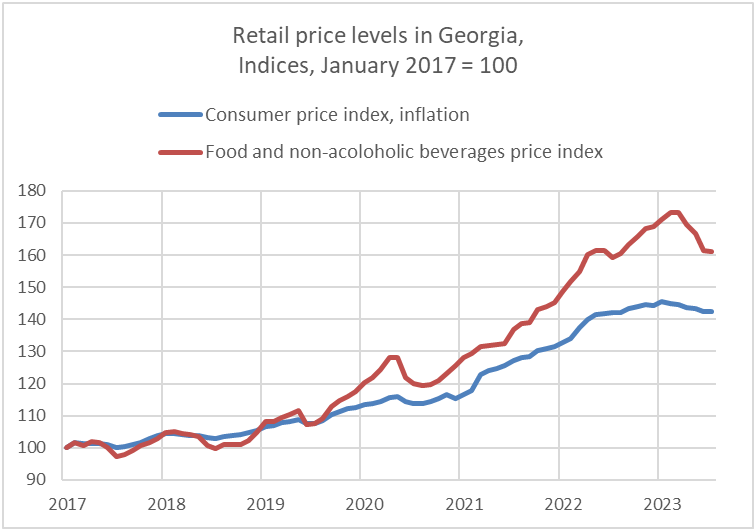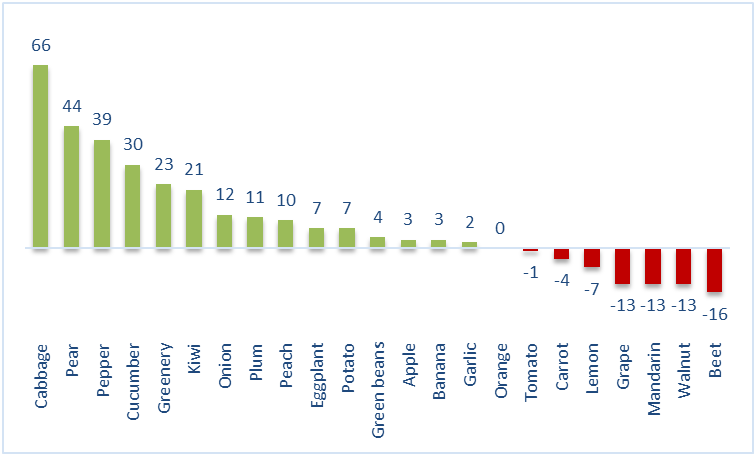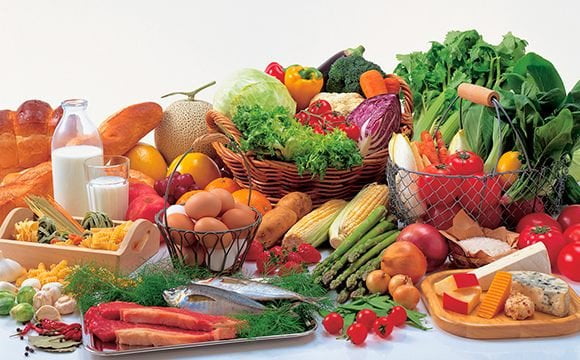After rising for two and a half years, retail food prices are now stable in Georgia. It has to be said that retail prices for some fruits and vegetables were way above last year’s levels in July. Analysts at EastFruit note that the latter were caused by short-term market fluctuations.
 Data source: GeoStat
Data source: GeoStat
According to the official data, the average retail price for food in Georgia in July 2023 has remained practically the same as in June 2023. It was almost the same as in July last year. The general price level, which includes all consumer goods and not just food, has stabilized in a similar fashion to the food group.
At a glance, there were some wild upward swings in the retail prices of specific fruits, and vegetables. However, they should not be very significant or long-lasting.
Year-on-year growth in retail prices for fruits, nuts, and vegetables, July 2023 vs July 2022, %
 Data source: GeoStat
Data source: GeoStat
The top three annual retail price growth rate in July 2023 comes from cabbages (+66%), pears (+44%), and peppers (+39%). July is an early harvest period for these products, which is naturally volatile. Gaps in supply can appear as the market is switching to the new season. This causes temporary price spikes for the early harvest. According to EastFruit’s wholesale price monitoring tool, wholesale prices in the first week of August have already reduced from the July levels. Hence it will be logical for retail prices to reduce.
Cucumbers (+30%) and greenery (+23%) had the fourth and the fifth highest retail price growth. They are generally very volatile markets in Georgia. Prices can be very high in one week, and much lower in the next one as the supply is very susceptible to weather shocks and it is not stable at this time of the year.
Read also: Onion price crush in Georgia: what are the reasons and perspectives?
Retail prices for kiwifruit grew by 21% in July 2023 compared to July 2022, which is the sixth highest growth. This market should be very small and hence volatile. July is not the season for kiwifruit and the overall consumption should be low. Therefore, the increase in kiwifruit prices must not be a big issue for Georgian consumers.
All other fruits, nuts, and vegetables had their retail prices changed by +12% or lower over the year. The periods of huge retail price spikes, which were long-lasting should be over for now.
There are several major factors to consider. According to the National Bank of Georgia, the following events contribute to overall low inflation in Georgia:
- Prices for products have been reducing in the international markets.
- Oil prices were also lower in July 2023 in year-on-year terms.
- International shipping prices have dropped to pre-pandemic levels.
- Georgian currency strengthened.
All these factors are directly tied to the imports and put negative pressure on the price levels in Georgia, including the prices for fruits, nuts, and vegetables. Of course, they can also translate into lower prices for some non-labor inputs that local farmers use. Oil is a direct example of this.
Looking ahead, if these international factors do not worsen in the future, they will surely contribute to the stability or even reduction of retail prices for food in Georgia. For fruits, nuts, and vegetables, it is especially important that both global and local harvest and supply lines should not be disrupted by natural, or non-natural causes, like the ongoing invasion of Ukraine by russia.
The use of the site materials is free if there is a direct and open for search engines hyperlink to a specific publication of the East-Fruit.com website.




